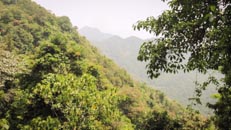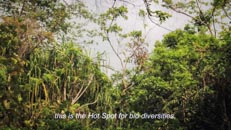The ‘Eden of God’s own Country’
The district of Wayanad extends over an area of 2125 sq.km. As the south-western tip of the Deccan Plateau, at an altitude of 700 meters above the sea level. Tamilnadu and Karnataka states and Kannur and Kozhikode districts of Kerala state are the borders around.
Wayanad district is famous for its tropical climate and lush green hills, valleys
and forests. The district is emerging as the major location for eco-tourism in southern India. It is also the inheritor of ancient religious and cultural heritages. These are reflected in the very old and diverse religious institutions, festivals and tribal ballads. The several old forts and monuments still existing in the district expose the historical importance of the area.
Wayanad also is one of the tri-juncture districts of Karnataka, Tamil Nadu and Kerala known as the ‘Nilgiri Biosphere’ which is world-wide famous for its bio-mass resources, environment richness and scenic beauties. This tri-juncture area has common features in its populace and flora & fauna resources.


The population of Wayanad is 6,71,105 (1991 Census) of which 3,41,187 are men and 3,30,000 women. 20% of the district population are indigenous/tribal peoples who form 36.5% of the total indigenous/tribal population of the whole state. The indigenous/tribal peoples of Wayanad include 14 different communities officially recognized by the state as Scheduled Tribes. The Kurichia, Paniya, Adiya, Thenukuruma and Mullukuruma are the major communities. Historically, these indigenous communities had maintained their time-tested patterns of self-governance, social institutions and cultural heritage living in symbiotic relationship with the nature and forest.
The post independent governments followed a development model of extraction of natural resources followed by intensive cultivation and plantation that soon led to depletion of natural resources as well as productivity of the land. The predatory onslaughts on the natural resources as well as the Adivasi homelands were supported by legislative measures.
Wayanad or ‘vayal nadu’ literally mean paddy fields, transformed itself into a place rich in cash crops like coffee, pepper, tea, cardamom, etc. Vast forests were clear felled. Food crops gave way for cash crops. Unemployment grew by bounds. Starvation and seasonal water shortage increased with the marginalized suffering the most. The erratic trends in the global market led to wide fluctuation in the price as well as demand for cash crops. The intensively cultivated land could not sustain the production. Crisis in the agricultural sector began to take its toll. The traditional sustainable subsistence agriculture became a matter of the past relegated to memory. The farmers either looked up to newer methods of economic progress as for example the tourism sector or began to critically review the strategy for getting the lands to sustain them.
Despite the rich natural endowments and the wealth generated for the State, Wayanad remained uncared for by the governments that ruled it. During the British rule, Wayanad was under the Madras Presidency. In 1956 when Kerala state was formed, it was equally divided under Cannanore and Calicut districts as North Wayanad and South Wayanad respectively for administrative purpose. In those days Wayanad was referred to as ‘Africa of Kerala’ because of its extreme socio-economic backwardness as well as the high concentration of the tribal communities. After the formation of the separate political division of Waynad district in 1980, there have been some focused development efforts mostly cantered on infrastructure development. The district continues to be one of the most backward districts in the state in all respects in terms of the physical quality of life of the vast majority, especially of the indigenous people, the labourers and small farmers of the district.









